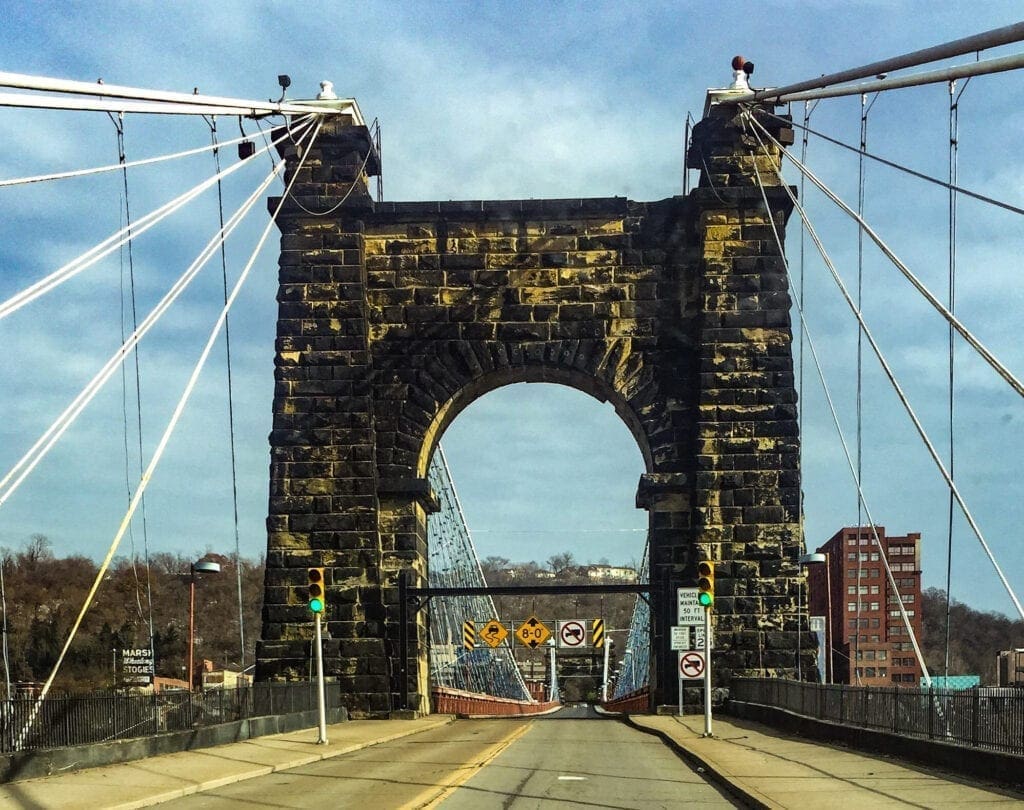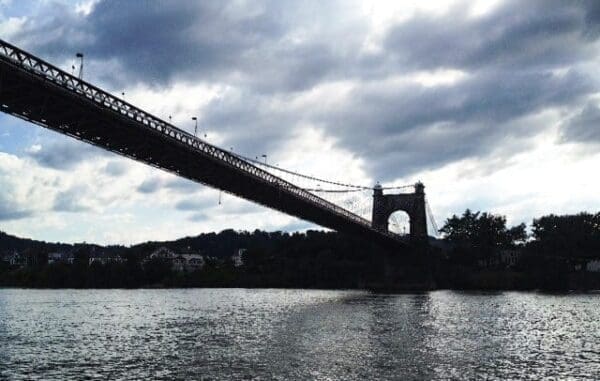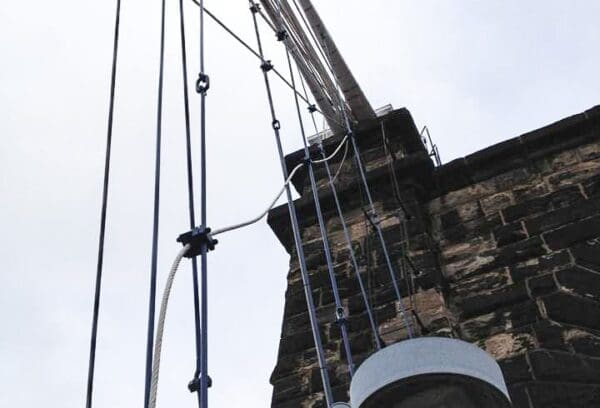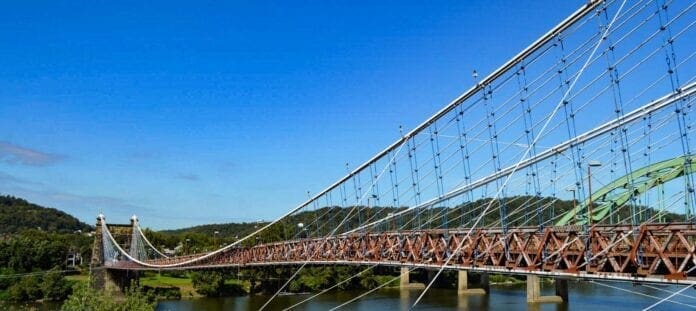While cables have snapped and motorcoaches and overweight vehicles have caused damage to the Wheeling Suspension Bridge, the reasons for the historic span’s closure in September 2019 are related to one of the anchorages beneath Main Street in downtown Wheeling.
Tony Clark, District 6 engineer for the W.Va. Division of Highways, said inspectors came away concerned following a comprehensive analysis on the 171-year-old structure.
“Whenever there is known damage to the bridge, it is closed as a precaution until inspectors can get to the location and do what they do,” Clark explained. “When our guys got out there and took a look, they determined they really couldn’t find any new damage that would require us to keep it closed. That’s when we sent a second crew to take even a closer look.
“We wanted a more thorough inspection just to make sure, and it’s a good thing that’s what we did,” he said. “During that second inspection it was uncovered that there is an issue with the northeast anchorage of the Suspension Bridge on the downtown side where the suspension cables go under the ground. That’s the primary concern right now, and that’s why it remains closed.”

One Bad Bid
For more than a year, officials with the state Department of Transportation have developed the latest design for a preservation and restoration initiative and placed the project out for bid. When the submission period expired, though, the only proposal was from Advantage Steel and Construction out of Saxonburg, Pa.
The bid was rejected by the DOT last week for a few reasons, Clark said, including the fact the $17.7 million bid was more than double than the state’s $8 million estimate.
“When I looked at the bid that came in, there were a couple of items specifically that were significantly higher than what we estimated,” Clark said. “They were way, way higher than what our engineer’s estimate was. What I believe is going on, because it has been mentioned that some things need clarified in the contract, is that there was likely some ambiguity involved within the contract.
“Based on those items in the contract coming in much higher than we expected, there may be some additional risks that would transfer to the contractor,” he said. “I know it wasn’t intentional, and I know the people in Charleston are going to go back and clarify a few things in the contract to help bring that bid down before putting the project back out for bid.”

Clark remains unsure why the Suspension Bridge project attracted only one bidder, a company that was hired by Swank Construction as a subcontractor to address steel repairs on bridges along Interstate 70 in Ohio County.
“Hopefully, the next time we get more than a single bid because it’s one thing if we are wrong with the engineer’s estimate, and it truly costs more than what we think it does,” Clark explained. “We don’t know that right now because there was only one bid. Our engineers may be completely off, but we don’t know that right now.
“With only one bid, though, we can’t say one way or the other,” he said. “Now, I can’t say why we received only one bid for the project. Maybe it’s the unique nature of the project that only attracted the one bid. Is it the climate? The workload? I don’t have answer to those questions.”

How About this Question?
The Wheeling Suspension Bridge is older than the state of West Virginia, and it was designated as a National Historic Landmark in 1975. The span has been closed to vehicular traffic on several occasions, most recently after a Lenzer Tour bus damaged the bridge after taking it from Wheeling Island in June 2019.
Although it was reopened briefly, it has been open only for pedestrians and bicyclists for more than a year. Many local residents, especially those living and/working on Wheeling Island, are curious about how long the state’s bid rejection will extend the wait. When Gov. Jim Justice trashed the first round of bids received for the I-70 bridge project in 2018, the “Roads to Prosperity” project was delayed by a year.
“That is a question that I really don’t know the answer to right now,” Clark said. “What I have been told is that this process typically takes about three to six months to go back and re-evaluate the project to make whatever changes need to be completed, and then to put it out for bid the second time. My thought is that, with the emphasis on this particular bridge, I have a feeling it will not take that long.

“But that is out of my hands, as far as how quickly the process moves forward,” he continued. “Now, as far as the bridge itself, there is no imminent danger with what is allowed on that bridge right now. The bike rider, runners, and walkers pose no threat to that span. Now, I suppose if all of Wheeling decided to stand out there on it all at once, it would cause an issue.”
Even after the two-year process to rectify the issues with the Suspension Bridge, there is still no guarantee the state will permit cars and trucks to cross it ever again. Issues concerning the number of overweight vehicles have provoked a plethora of suggestions, some of which have been rejected by local and state historical organizations.
“That decision will be made by the (DOT) in Charleston after the repairs are performed, and the Suspension Bridge is re-evaluated once again,” Clark confirmed. “I know the No. 1 priority is preserving it because of its historical value to the city, the state, and to the country, so whether or not motorists will ever be able to use it again remains a question without an answer right now.”


